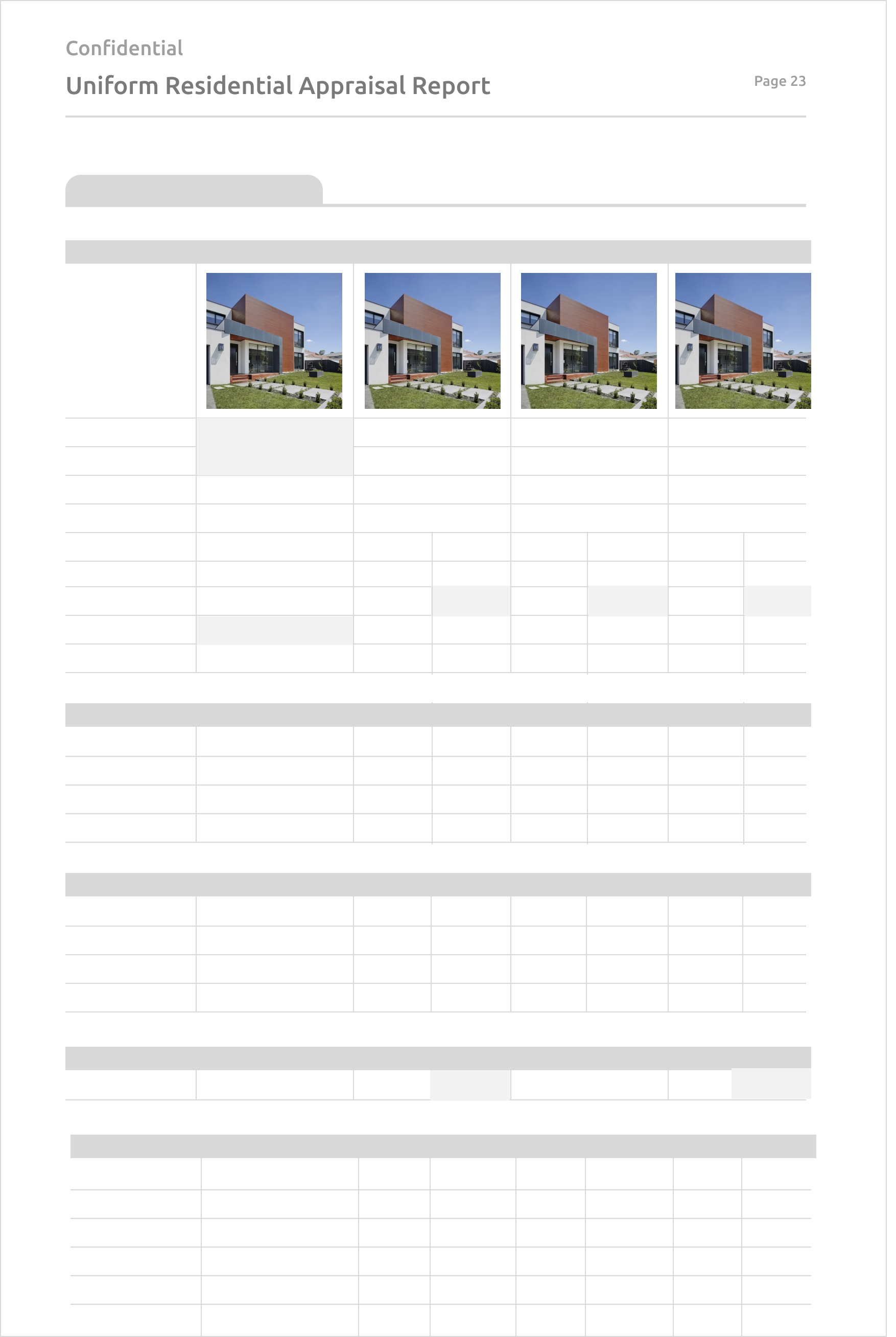
The appraisal industry is anxiously anticipating the rollout of the new Uniform Residential Appraisal Report (URAR). The revamped report aims to enhance efficiency, clarity, and standardization in the valuation process which will impact Appraisers, Lenders, and Appraisal Management Companies (AMCs) alike.
Here are some of the key changes that all stakeholders can expect in the new URAR as highlighted by Fannie Mae:
Boosting Efficiency and Streamlining Workflow
Say Goodbye to the Addenda Maze:
The new URAR integrates a dedicated comments section within each relevant section of the report writing process. These sections eliminate the need for separate addenda, saving time and simplifying navigation for all relevant stakeholders of the report review process.
Legacy Form

New Form

Enhanced Sales Grid for Deeper Analysis
Appraisers can expect a more dynamic sales comparison grid. The grid can now adapt to the specific property type, potentially including additional data points that are relevant to the valuation. This will allow for a more comprehensive analysis and a stronger supporting argument for their appraisal.
Legacy Form

New Form

Enhanced Clarity and Improved Communication
Dedicated Summary Page for Quick Reference
The new URAR includes a dedicated summary page that concisely overviews key property details and valuation conclusions. This offers a clear and readily accessible reference point for stakeholders.
Legacy Form

New Form

User-Centered Design for Easier Navigation
After a comprehensive research process, led by the GSEs, comprising 3 phases and incorporating feedback from around 107 stakeholders (Fannie Mae). The feedback received was incorporated to improve the layout and formatting of the new URAR. This enables a more user-friendly and intuitive experience. All the key stakeholders can anticipate a clearer organization of data, improved navigation, and easier-to-understand layouts throughout the new URAR.
Standardization and USPAP Compliance
Standardized Data Fields for Consistency:
The new URAR heavily emphasizes standardized data fields. This ensures consistency in data collection across different appraisals, making it easier for lenders and other stakeholders to compare reports and identify market trends. The standardized data fields also promote machine readability which will enable all key stakeholders to cut time on the review process.
Legacy Form

New Form

Enhanced USPAP Compliance
The new URAR is designed to comply more with the Uniform Standards of Professional Appraisal Practice (USPAP). This ensures your appraisals adhere to the highest professional standards, upholding trust and reliability in the valuation process.
Preparing for the Transition
Potential Implications for Stakeholders
All stakeholders should be prepared for the new format. Here are some proactive steps to consider:
- Seek Training: Once finalized, training programs offered by the GSEs will be crucial for a smooth transition.
- Software Updates: Report writing and report review tools will need to adapt to the new URAR. Keep in touch with your preferred software provider for updates or compatibility information.
Appraisers:
Empowering appraisers with efficiency, the new URAR boasts features that streamline the report creation process, allowing appraisers to spend less time on administrative tasks and dedicate more time to the core analysis, empowering appraisers to deliver high-quality valuations.
AMCs:
Streamlined workflow and standardized data collection could potentially expedite the appraisal review process for AMCs. However, the implications on timelines and potential adjustments to reviewing procedures remain to be seen.
Lenders:
Enhanced clarity and standardized data could expedite loan approvals and improve risk assessment for lenders. However, the learning curve associated with the new format might introduce initial delays until all stakeholders are comfortable with it.
Conclusion
The new URAR provides an exciting opportunity for a more efficient appraisal process. Stakeholders can start by being proactive and embracing the renovations, appraisers, AMCs, and lenders can all benefit from the new report’s efficient approach and focus on delivering high-quality valuations.



